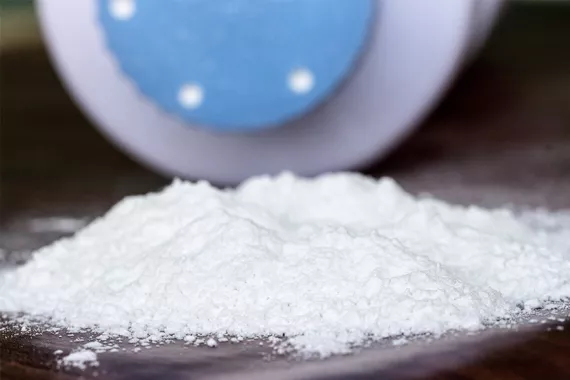
Case Overview
No final talcum powder lawsuit deadline exists yet. Although Johnson & Johnson has filed proposed bankruptcy plans several times, no plan has been accepted by that court and the national products liability litigation In re: Johnson & Johnson Talcum Powder Products Marketing, Sales Practices and Products Liability Litigation (MDL-2738) is still ongoing in federal court. Therefore no final settlements are in place.
Key takeaways about a potential talcum powder lawsuit deadline
- Talcum powder lawsuits are ongoing, with deadlines for filing one depending on when a person was diagnosed with related ovarian cancer.
- The primary defendant, Johnson & Johnson, delayed settlement awards through attempted bankruptcy filings through bankruptcy court.
- A talcum powder products liability lawsuit lawyer can help you understand any potential deadlines in the personal injury court as they arise.
Current status of talcum powder lawsuits
People who developed ovarian cancer after using talcum powder products from Johnson & Johnson continue to file lawsuits. Learn more about how these cases have progressed up to this point.
Progression of talcum powder lawsuits against Johnson & Johnson
Johnson & Johnson is the primary defendant in the talcum powder lawsuits. It has a history of using talcum powder in hygiene products, such as baby powder. Its actions with talcum powder products include:
- Distributing
- Formulating
- Marketing
- Manufacturing
- Promoting
- Selling
- Testing
Johnson & Johnson performed these actions with its talcum powder products in all 50 states.
Imerys Talc America, Inc., a talc mining and distribution company, has also been a defendant in lawsuits. It supplied Johnson & Johnson with talc. Another former defendant is the Personal Care Products Council (PCPC). This defendant is a trade organization that performs marketing for personal care product industries, like the talc industry. Many believe the actions of the PCPC affected the way people used talc products.
When talcum powder lawsuits began
Talcum powder lawsuits date back to the early 2000s. There have been many filed cases in US courts claiming talc-based powder caused a variety of cancers including ovarian and mesothelioma.
The first lawsuit related to talcum powder use and ovarian cancer was Berg v. Johnson & Johnson in 2013. A federal jury in Sioux Falls, South Dakota, said Deane Berg’s development of ovarian cancer was related to Johnson & Johnson body powder products containing talc. She developed ovarian cancer in December 2006 at age 49. She used talc-based Johnson & Johnson products daily for feminine hygiene from 1975 to 2007.
In April 2020, a New Jersey judge ruled that women who alleged talcum powder caused their ovarian cancer could continue with their claims against Johnson & Johnson. This ruling affected thousands of women who were part of the initial wave of lawsuits. Now, more than 59,000 people have filed lawsuits against the defendants.
These lawsuits involve cancer of the female reproductive system arising from Johnson & Johnson’s talc-based baby powder and similar products. The types of cancer covered in many talcum powder lawsuits include:
- Fallopian tube cancer
- Ovarian cancer
- Primary peritoneal cancer (PPC)
As of May 2024, lawsuits involving cancers of the lungs or mesothelioma are handled differently. They are not part of these lawsuits involving women’s reproductive system cancers. Our litigators have handled many cases related to mesothelioma.
Soon after the district judge allowed the products liability lawsuits to continue, Johnson & Johnson decided to stop producing products that included talc-based baby powder in the United States and Canada.
Johnson & Johnson’s bankruptcy attempts
Johnson & Johnson has made attempts to resolve the talcum powder cases. It has branded these attempts as “settlement offers.” However, these are not actually settlements. They are bankruptcy plans that include a Plan of Reorganization with a planned procedure to compensate ovarian cancer victims. So far, courts have rejected Johnson & Johnson’s plans because the judges have found the company is not financially distressed enough to need bankruptcy proceedings.
- In July 2023, Johnson & Johnson proposed a bankruptcy plan including $8.9 billion to resolve talcum powder lawsuits.
- In May 2024, Johnson & Johnson separated talcum powder ovarian cancer claims from those involving mesothelioma cancer. This bankruptcy plan included $6.475 billion to ovarian cancer patients, to be paid over 25 years. Johnson & Johnson claimed that this would end 99.75% of the pending ovarian cancer lawsuits from talc powder usage in the United States. In September 2024, some news outlets reported that this amount was increased.
J&J has also attempted to claim bankruptcy in other ways, including trying to offload financial burdens to shell companies. This approach is called “the Texas two-step.”
What is the Texas two-step?
The Texas two-step is an effort by corporations to avoid mass tort liability. The tactic begins with creating a subsidiary that takes on the company’s legal liabilities and responsibilities. The subsidiary then files for bankruptcy to pause all lawsuits against it. Texas laws allow corporations to use this tactic.
While facing the talc powder lawsuits, Johnson & Johnson attempted to deploy the Texas two-step multiple times.
- Johnson & Johnson chose to restructure the company in October 2021, forming entities called LTL Management and New Consumer.
- New Consumer continued the business of Johnson & Johnson, while LTL Management took over management of all talc lawsuits and bankruptcy-related expenses. Creating separate entities to handle lawsuits is the first step of the Texas two-step.
- Within a few days of creating these separate entities, LTL Management filed for Chapter 11 bankruptcy in North Carolina. This action was the second step of the Texas two-step. The bankruptcy filing places an automatic stay against any actions creditors could take, including seeking payments for a lawsuit.
- A few months later, the North Carolina court denied the filing of bankruptcy because it determined LTL Management was not in financial distress.
- In April 2023, LTL Management filed for bankruptcy a second time, this time in New Jersey. It again tried to use the Texas two-step. The New Jersey court rejected LTL’s bankruptcy filing in July 2023.
- As part of its bankruptcy plan from May 2024, LTL Management announced that it might file for Chapter 11 bankruptcy again, if necessary.
Contact a talcum powder lawyer
If you or someone you love used talcum powder and later developed ovarian cancer, you may have a talcum powder claim. Please contact medical attorney Carmen Scott by email or call 1.800.768.4026 to learn more about talcum powder lawsuit deadlines.
What is the talcum powder lawsuit deadline for filing?
There is no singular talcum powder lawsuit deadline as statutes of limitations differ by state. People who have developed cancer from talcum powder use may have a limited window to file a lawsuit, depending on their state’s statute of limitations. Plaintiffs are still filing talcum powder ovarian cancer cases. Individuals are also still filing cases related to lung cancer and mesothelioma diagnoses alleging that asbestos exposure from talcum powder use.
How state statute of limitations for injury claims affect the deadline
The only deadlines people with talcum powder-related diseases currently face are deadlines related to their state’s statute of limitations.
Product liability cases and state statute of limitations
Ovarian cancer talcum powder lawsuits fall under product liability cases, so state statutes of limitations (SOL) apply. In a product liability case, the SOL sets a deadline for the injured party to file a lawsuit against the defendants.
In many states, the SOL for personal injury product liability cases is two years. However, they do vary from one, three and four years.
It’s important to understand that the SOL clock typically does not start until the victim either discovered or should have discovered the injury and its cause. In this case, that usually means receiving the diagnosis of ovarian cancer and realizing that the use of talc-based products could have led to the cancer.
If your loved one died of talc-related ovarian cancer, a different statute of limitations may apply. This is known as a wrongful death SOL. In those cases, the clock may not begin until the date of the victim’s death.
How lawyers can help you understand any statute of limitations in your case
Because of Johnson & Johnson’s alleged attempts to conceal the dangers of its talc-based powder products, different state statutes of limitations may affect your case. Patients and their doctors could not have been expected to understand the potential connection between talcum powder and ovarian cancer because of Johnson & Johnson’s actions.
Understanding your state’s SOL can be complex. If your case involves special circumstances affecting the SOL or potential talcum powder lawsuit deadlines, the case might be even more complicated. Reaching out to a plaintiff’s lawyer who has been actively involved in the talcum powder cancer litigation can be extremely helpful in understanding your options.
Is it important to have a talcum powder lawyer?
Having a lawyer with toxic exposure experience and prior knowledge of the talcum powder lawsuits can be very beneficial. Your talcum powder attorney can help you understand your options for filing a lawsuit. Our women’s health and toxic exposure lawyers can provide important advice for you about how to navigate these complex legal cases.
Motley Rice attorneys who have experience with the talcum powder, asbestos and similar cases can help you file your lawsuit properly. We’ll alert you to any deadlines, offers and other developments.
When hiring our lawyers to handle the legal side of the talc powder lawsuit, victims who developed cancer can focus on trying to regain their health and families who lost loved ones to ovarian cancer after a talcum powder exposure can focus on their grief and the many complexities that come with loss. The legal team at Motley Rice can relieve the burden of managing a lawsuit for victims and their families.
Our toxic exposure lawsuit experience
Over the years, many people suffered exposure to dangerous chemicals and products because of negligent or reckless behavior from corporations. The defendants in these cases often knew for many years that their products were dangerous, yet they hid or downplayed the information. Such actions lead to even more people being exposed to the hazards of these dangerous products.
As early as 1971, studies began appearing that showed an association between the use of talc and ovarian cancer. Yet, Johnson & Johnson did not cease producing talcum-based products in the U.S. and Canada until 2020.
At Motley Rice, we have extensive experience representing women injured by defective and dangerous products. Beyond talcum powder lawsuits, we have experience litigating dangerous product liability lawsuits in several instances, including for:
- Women who developed mesothelioma as a result of being exposed to asbestos from their own work with asbestos products, or as a result of a family member working with asbestos products and bringing invisible asbestos fibers home from work. Motley Rice attorneys have been litigating lawsuits and obtaining verdicts and settlements for women with mesothelioma since the 1980s.
- Women who developed lung cancer, heart disease, or peripheral vascular disease who began smoking cigarettes before there were warnings on cigarette packs.
- Women who developed reproductive cancer after using chemical hair relaxer and straightener treatments.
- Women who had Allergan breast implants and later suffered breast implant-associated anaplastic large cell lymphoma (BIA-ALCL).
- Women who used birth control devices like Essure® and suffered severe health complications.
- Women who used certain prescription drugs during pregnancy and later gave birth to babies with birth defects.
- Women who used hernia mesh and transvaginal mesh and suffered severe health complications.
You can reach out to us at any time with questions regarding your exposure to harmful women’s products.
Learn more about our experience with lawsuits related to women’s health.
Current status of talcum powder lawsuits
What is the Texas two-step?
What is the talcum powder lawsuit deadline for filing?
How state statute of limitations for injury claims affect the deadline
Is it important to have a talcum powder lawyer?
Our toxic exposure lawsuit experience
- Sources
- Bloomberg. J&J Rejected $19 Billion Baby Powder Cancer Accord Pitched by One of Its Ex-Lawyers.
- Bloomberg Law. J&J Is Left Weighing Options After Second Talc Bankruptcy Tossed.
- Casetext. Berg v. Johnson & Johnson.
- Casetext. Six Important Facts You Need to Know About Product Liability Lawsuits.
- CNBC. Johnson & Johnson To Pay $8.9 Billion To Settle Talc Cancer Claims.
- Cornell Law School. Legal Information Institute: Statute of Limitations.
- FindLaw. Product Liability Law.
- FindLaw. Wrongful Death Claims: Time Limits and the Discovery Rule.
- Harvard Law Today. Waltzing Across Texas.
- Johnson & Johnson. Johnson & Johnson Announces Plan by its Subsidiary, LLT Management LLC, to Resolve All Current and Future Ovarian Cancer Talc Claims Through a Consensual “Prepackaged” Reorganization.
- Johnson & Johnson. Johnson & Johnson Subsidiary LTL Management LLC (“LTL”) Re-Files for Voluntary Chapter 11 to Equitably Resolve All Current and Future Talc Claims.
- Justia. Bringing a Products Liability Lawsuit.
- Reuters. J&J Must Pay $72 Million for Cancer Death Linked to Talcum Powder – Lawyers.
- The University of Chicago Business Law Review. Court Rejects Johnson & Johnson’s Use of the “Texas Two-Step” to Tackle Baby Powder Liability.
- The University of Miami Law Review. The Texas Two-Step: A Controversial Bankruptcy Dance.


